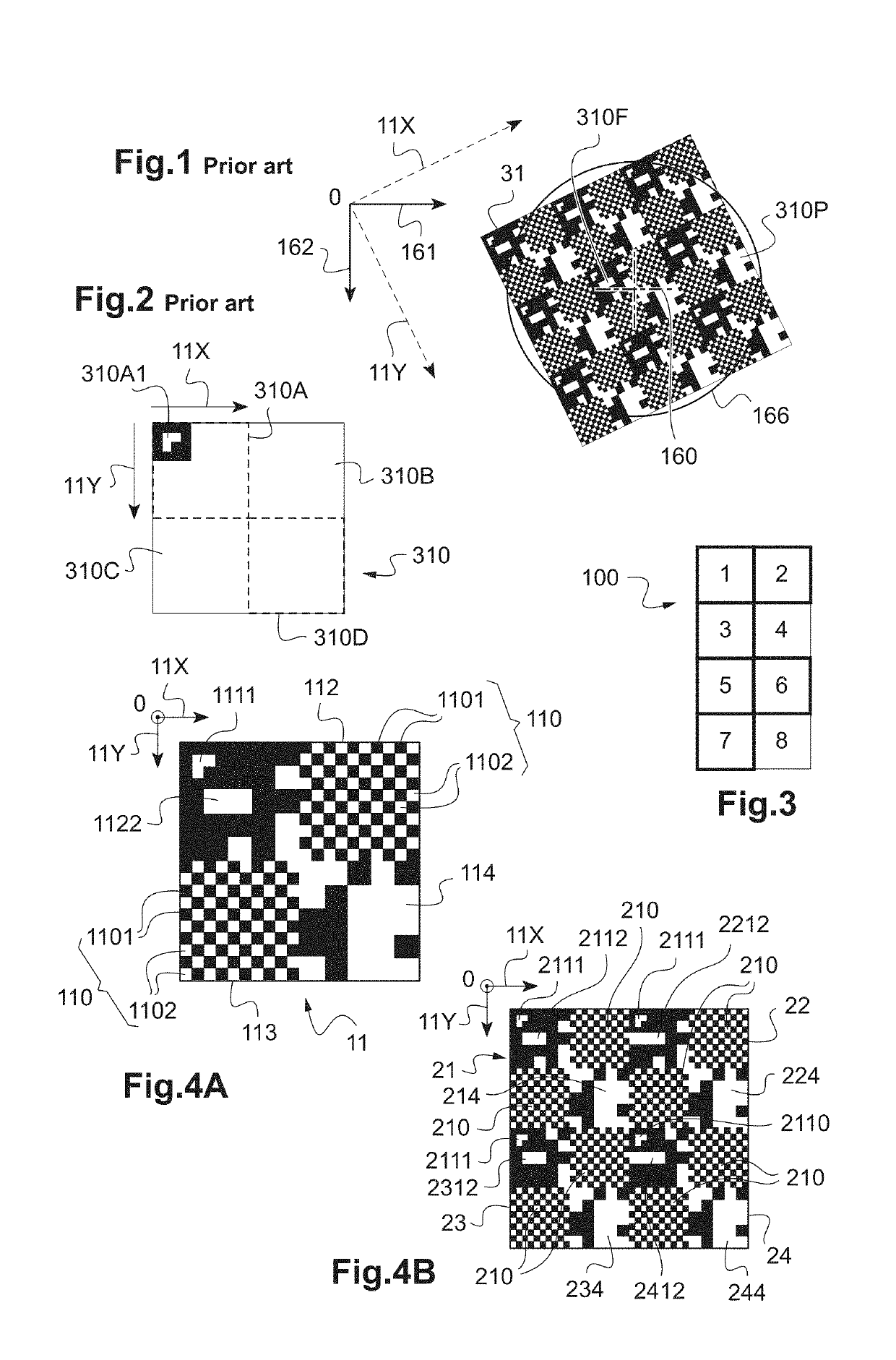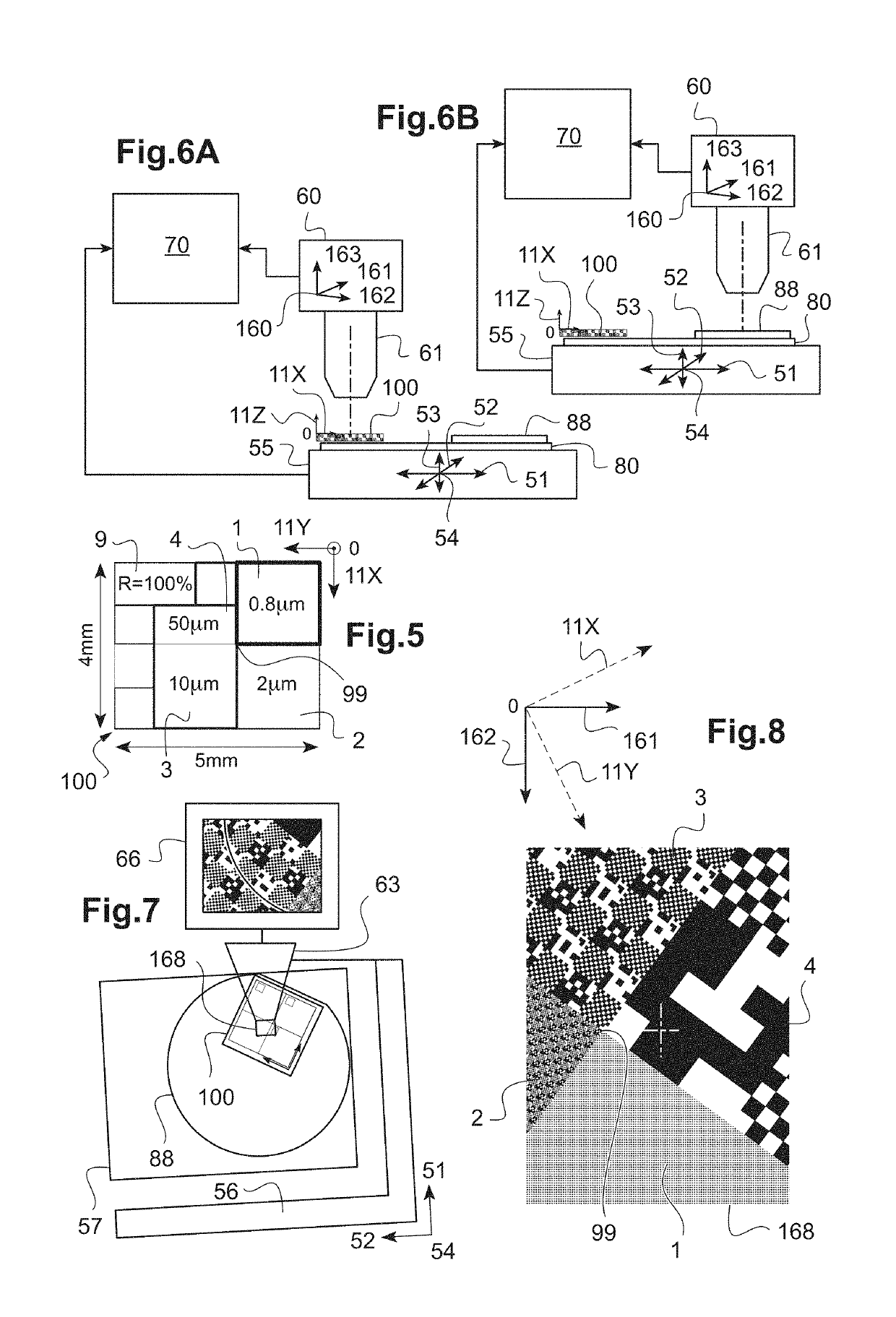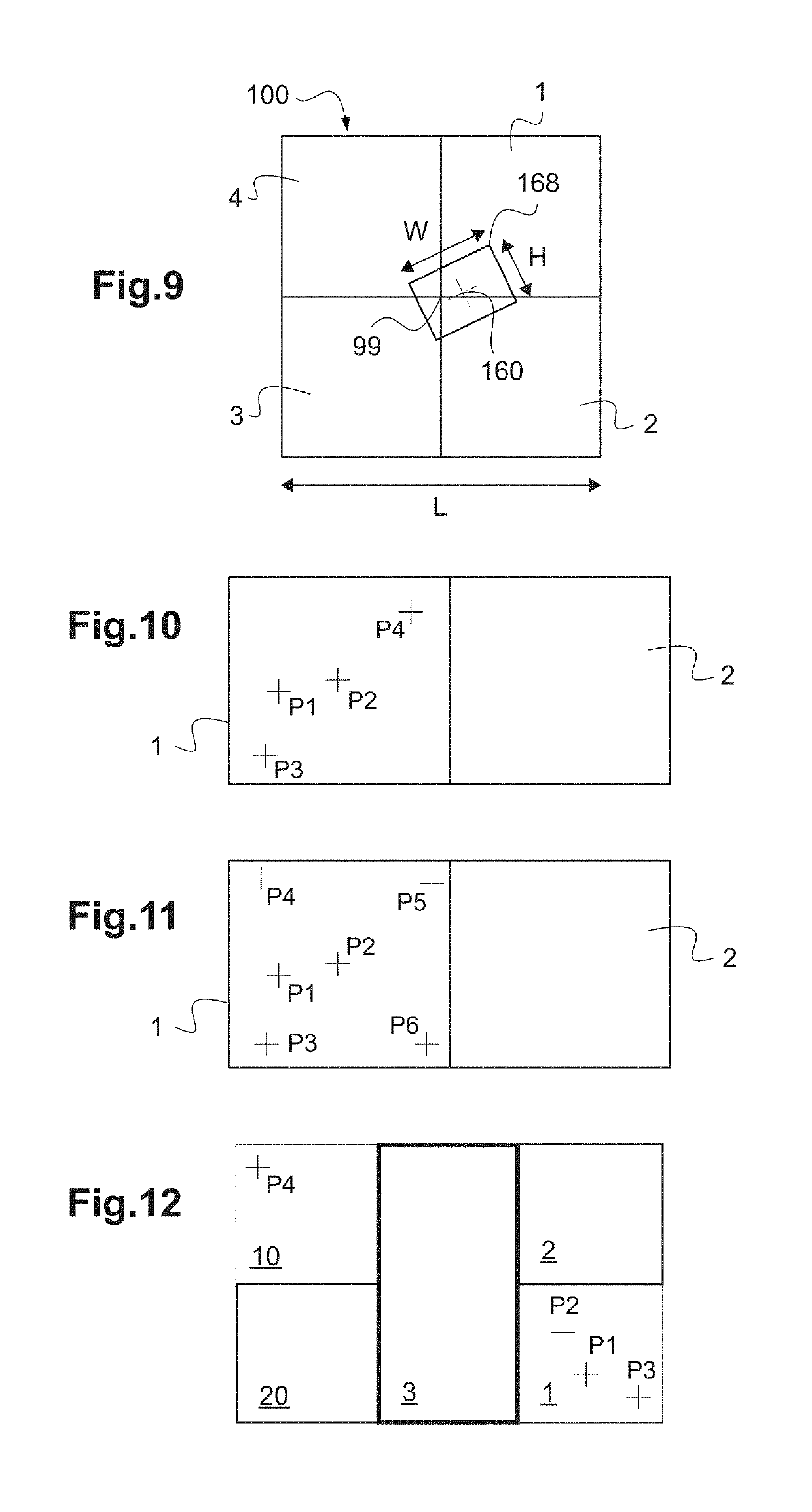Micro-localisation method and device for an imaging instrument and a measuring apparatus
- Summary
- Abstract
- Description
- Claims
- Application Information
AI Technical Summary
Benefits of technology
Problems solved by technology
Method used
Image
Examples
Embodiment Construction
[0041]The following description regarding the appended drawings, given as non-limiting examples, will make understood what the invention consists of, and how it can be achieved.
[0042]In the appended drawings:
[0043]FIG. 1 represents an image of a part of a localisation sight according to the prior art;
[0044]FIG. 2 represents a schematic view of a localisation sight elementary cell illustrating a coding of identification, orientation and position patterns;
[0045]FIG. 3 schematically represents a macroscopic view of a micro-localisation device composed of a plurality of zones according to an embodiment;
[0046]FIG. 4A represents a schematic view of an example of a first zone of a micro-localisation device, this first zone including one single elementary cell;
[0047]FIG. 4B represents a schematic view of an example of a second zone of a micro-localisation device, this second zone including a tiling of four elementary cells;
[0048]FIG. 5 schematically represents a macroscopic view of another ...
PUM
 Login to View More
Login to View More Abstract
Description
Claims
Application Information
 Login to View More
Login to View More - R&D Engineer
- R&D Manager
- IP Professional
- Industry Leading Data Capabilities
- Powerful AI technology
- Patent DNA Extraction
Browse by: Latest US Patents, China's latest patents, Technical Efficacy Thesaurus, Application Domain, Technology Topic, Popular Technical Reports.
© 2024 PatSnap. All rights reserved.Legal|Privacy policy|Modern Slavery Act Transparency Statement|Sitemap|About US| Contact US: help@patsnap.com










